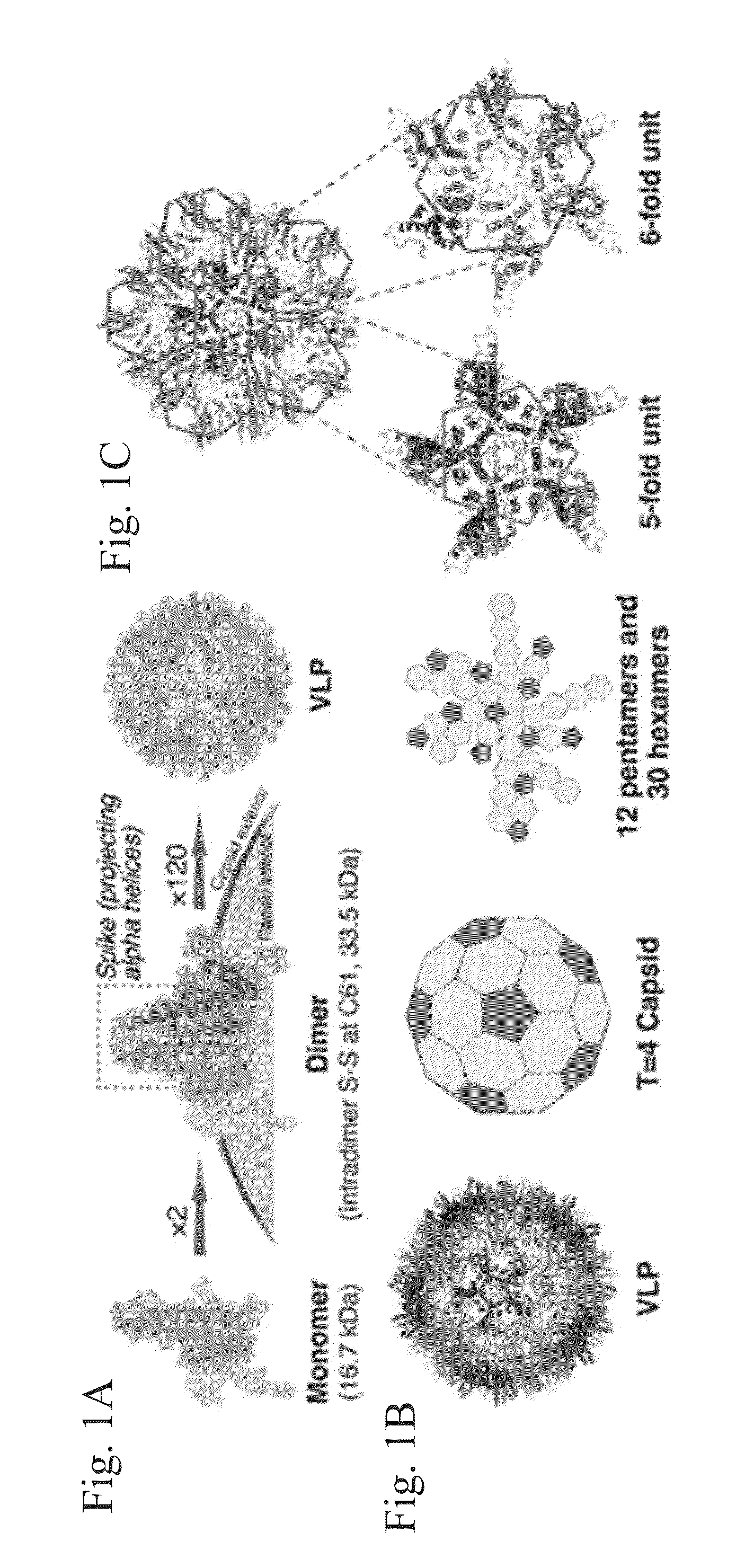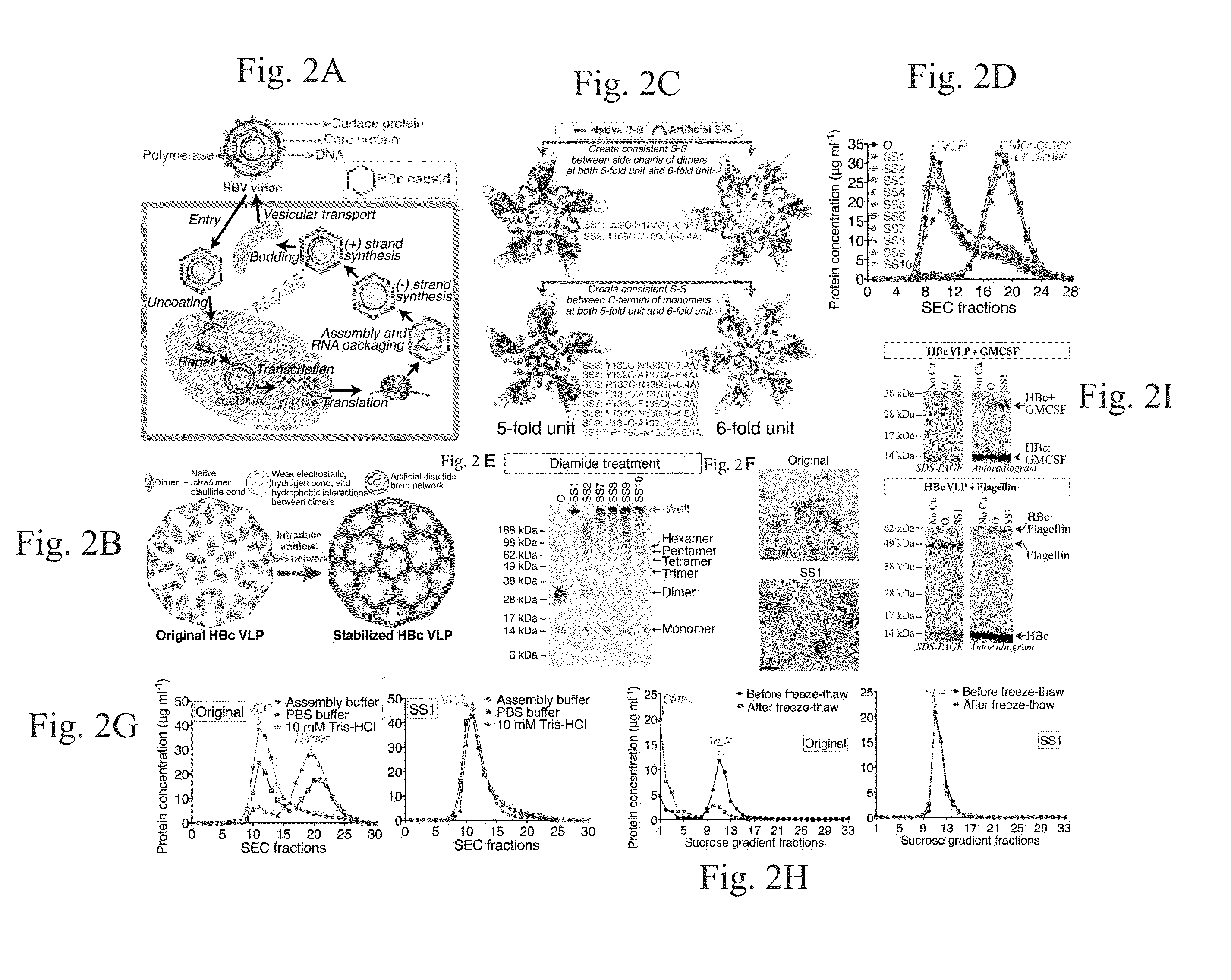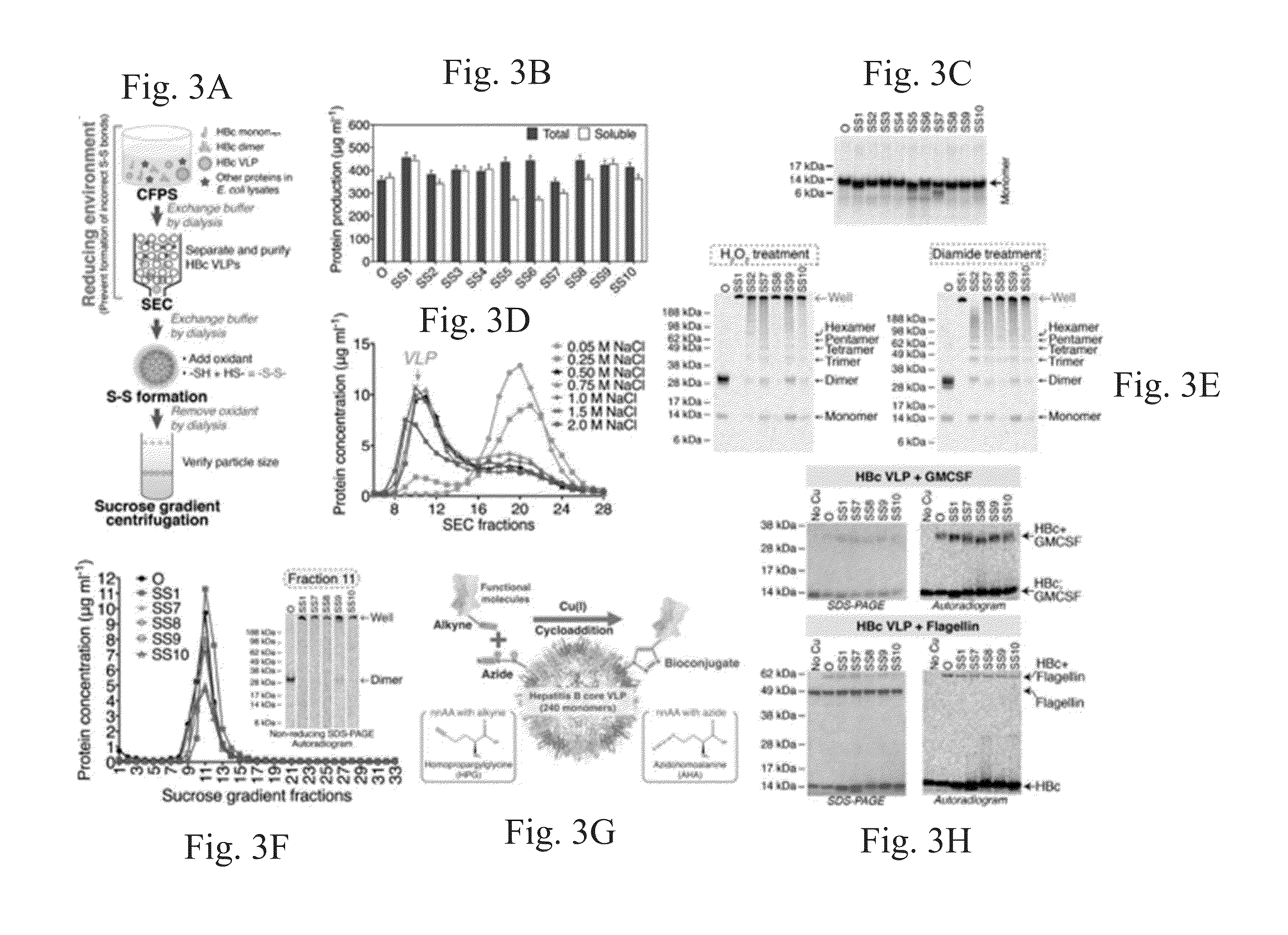Stabilized hepatitis b core polypeptides
- Summary
- Abstract
- Description
- Claims
- Application Information
AI Technical Summary
Benefits of technology
Problems solved by technology
Method used
Image
Examples
example 1
Stabilization and Modification of Hepatitis B Core (HBc) Virus-Like Particles (VLPs)
Materials and Methods
[0134]Plasmid construction. The sequence encoding the human Hepatitis B core (HBc) capsid monomer of subtype adyw (Pasek et al., 1979) with the C-terminus truncated at amino acid 149 was optimized for E. coli tRNA concentrations and was synthesized from oligonucleotides designed with DNAworks v3.0. The vector pET24a-HBc149 was generated by ligation (T4 DNA ligase, New England Biolabs, Ipswich, Mass.) of the optimized HBc protein gene into the pET-24a(+) vector (Novagen, San Diego, Calif.) at the Nde I and Xho I restriction sites. To incorporate methionine analogues, two mutations (M66S and L76M) were introduced. pET24a-HBc149-M66S-L76M was transformed into DH5a cells and the plasmid was purified with Qiagen Plasmid Maxi Kit (Qiagen, Valencia, Calif.) for use in cell-free protein synthesis (CFPS). All mutants were constructed using QuikChange PCR (Stratagene, La Jolla, Calif.).
[01...
example 2
[0151]At physiological pH, the surface of the HBc VLP is negatively charged. The surface of the
[0152]HBc VLP is dominated by 120 dimer spikes that stick out from the surface. These spikes are obvious attachment sites with high steric availability, but they are terminated with four negatively charged amino acids (E77×2, D78×2). The negative charges on the VLP surface are from these four negatively charged amino acids on the spike tip. Because like charges repel, molecules with negative charges cannot get close to HBc VLP, and therefore the click chemistry conjugation cannot proceed effectively. The removal of the surface negative charges greatly decreased the protein's solubility, and HBc proteins could not self-assemble into VLPs very well. The following example addresses this problem.
[0153]Transplant of new spike. Removal of HBc VLP surface negative charges decreased its solubility and self-assembly ability. This led us to seek alternative methods for remodeling the HBc dimer spike...
example 3
[0173]This example describes methods for improving VLP production and surface conjugation, and evaluating HBc VLP antigenicity and immunogenicity.
Materials and Methods
[0174]Plasmid construction was performed as discussed in Example 1.
[0175]The sequences of 10 different variants with different cysteine mutations and 17 different variants with different AHA sites or different negative charge mutations are shown in Table 1 of Example 1 and Tables 6-7.
TABLE S1The sequences of 15 different HBc variants with different AHA sites or differentnegative charge mutations.VariantsDNA encoding sequenceA: L76AHAATGGATATCGACCCGTACAAAGAATTCGGCGCGACCGTTGAACTGCTGTCTTTCCTGCCGTCTGATTTCTTCCCGTCTGTTCGT CTGCTGGACACCGCGGCAGCACTGTACCGTGACGCGCTGGAATCTCCGGAACATTGTTCTCCGCATCACACTGCGCTGCGTCAGGCGATTCTGTGCTGGGGCGACCTG ACCCTGGCGACTTGGGTTGGCACCAAC GAAGATCCGGCGTCTCGTGATCTGGTTGTTTCTTACGTTAACACTAACGTTGGTCTGAAATTCCGTCAGCTGCTGTGGTTCCACATCTCTTGCCTGACCTTCGGTCGTGAAACCGTTCTGGAATACCTGGTTTCTTTTGGTGTTTGGATT ACTCCGCCGGCTTACCGTCC...
PUM
| Property | Measurement | Unit |
|---|---|---|
| Current | aaaaa | aaaaa |
| Time | aaaaa | aaaaa |
| Hydrophobicity | aaaaa | aaaaa |
Abstract
Description
Claims
Application Information
 Login to View More
Login to View More - R&D
- Intellectual Property
- Life Sciences
- Materials
- Tech Scout
- Unparalleled Data Quality
- Higher Quality Content
- 60% Fewer Hallucinations
Browse by: Latest US Patents, China's latest patents, Technical Efficacy Thesaurus, Application Domain, Technology Topic, Popular Technical Reports.
© 2025 PatSnap. All rights reserved.Legal|Privacy policy|Modern Slavery Act Transparency Statement|Sitemap|About US| Contact US: help@patsnap.com



